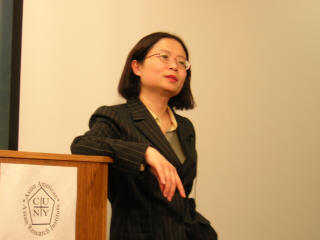
A wave of costume drama serials began to dominate dramatic programming in Chinese primetime television in the mid 1990s. Such drama serials featured historical figures and events of glorious bygone dynasties. The trend climaxed in the late 1990s and the early 2000s with the saturation of palace drama set in the Qing Dynasty (1644-1911), what the Chinese critics termed “Qing drama”. Qing dramas such as Yongzheng Dynasty (1999), Kangxi Dynasty (2001), and Qianlong Dynasty (2003) have featured the emperors and patriots who served the nation in the face of internal corruption and social injustice as well as external threats, feeding the public’s fantasy for a time of heroic figures and events. The Chinese public genuinely welcomed such dramas, delighting in recognizing their contemporary relevance. The Qing drama led costume dramas have been enormously popular in the pan-Chinese market and among overseas Chinese, making the genre the most exportable dramatic programs from the PRC.

This paper explores the forces conducive to the global circulation of PRC’s costume dramas. The concept of a cultural-linguistic market will be utilized to explore the popularity of such dramas in the pan-Chinese market and among the diasporic Chinese communities. The term “cultural-linguistic market” groups together communities not only by geographical proximity but also by commonalities of language and culture. The pan-Chinese region or the narrowly defined “Greater China” region refers to the geographic areas of Hong Kong, Taiwan, and the People’s Republic of China. The region has been divided along political and economic lines for most of the past century. The divergent histories and the complex circumstances of the political divisions between Hong Kong, Taiwan, and the PRC have led to quite distinctive media practices and markets in all three areas. Yet in the past decade, television has followed the suit of cinema to emerge as a medium able to cross the boundaries within “Greater China” and to further penetrate the world wide diasporic communities of Chinese. Indeed “Greater China” itself can be perceived as an extension of the pan-Chinese region, a virtual “imagined community” united through satellite broadcasting and portable and reproducible video technologies.

The efficient utilization of a cultural linguistic model relies on programming that appeals to various sub-regions with diverse political and economic conditions and aspirations. History and shared cultural memory become the unifying forces. Mainland China is blessed with such forces and the exportation of history becomes the most productive way of reaching the global market. Though various dialects exist, Mandarin has been the language of administration in the PRC and Taiwan and the standardized written-language in the Pan-Chinese region. Hong Kong has indulged in Cantonese programming yet the lust for the huge Mandarin markets has lured the Hong Kong producers to provide Mandarin soundtracks and to venture into making Mandarin dramas through co-productions, which help to facilitate the cultivation of a Chinese cultural-linguistic market.

